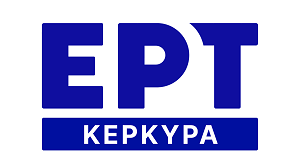Socrates, in his dialogue with Glaucon, as described in Ancient Greek philosopher Plato’s work called Republic, imagines humans located in an underground dark ‘Cave’, immobilized with chains on the legs and neck. Behind these people, at a distance and at a higher level, there is a fire. Other humans, statues and animal figures are placed behind these chained people and the glow of the fire casts their corresponding shadows onto a wall of the ‘Cave’ in front of them. Since they are not able to turn their heads, they perceive their casting shadows and hear the reflection of the sound they make on the wall of the ‘Cave’. Therefore, they assume that these shadows form their existing world (Ferrari 2000: 220–221).
Mathematician and philosopher of hyperspaces Charles Howard Hinton claimed a possible connection between Plato’s allegory of the ‘Cave’ and 4D space. He expanded the meaning of the ‘shadows’ via the induction method: as the shadow of a 3D object is a 2D shape, similarly, the ‘shadow’ of a 4D hyper-object is one dimension less; that is, a 3D object (Hinton 1904: 23–35).
The authors advance further along this line of thought and propose that the reflection of the sound on the walls of the ‘Cave’, that chained people perceive as their 3D acoustic space, has many similarities with the characteristics of 4D acoustic space, as proved mathematically by scientists. Specifically, in fourth spatial dimension a distortion which is propagated in the form of a main wave is followed by secondary waves of lower intensity (Morley 1985: 69–71; Math Pages 2017).
Finally, the authors present an interactive art application that they developed as a logical approach to the hypothetical 4D acoustic space of Plato’s ‘Cave’ perceived by the chained people and by someone that removes the chains and traverses through the ‘Cave’.
Dimitrios Traperas was born in Ioannina, Greece. He graduated from the School of Sciences, Department of Physics, University of Ioannina, as well as from the Department of Audio and Visual Arts, Ionian University, Corfu. He received his PhD in art and science from the Department of Audio and Visual Arts, Ionian University (2019). He has participated in many individual and collaborative exhibitions of painting, photography, audiovisual interactive installations and video-art. His main research interest focuses on audiovisual interactive art installations and the perception of hyperspaces. Today he lives and works in Corfu, Greece.
Professor Emeritus Nikolaos Grigorios Kanellopoulos has served as Vice-President of the Ionian University Council (2013-2017), President of the Audiovisual Arts Department (2007-2012) & (2017-2020), Vice-President for the Computer Science Department (2005-2007) and Faculty Member of the Archives & Library Science Department (2003-2007) of Ionian University, as Faculty Member for the Computer Science Engineering & Informatics Department of Patras University (1987-2003) and as President of the Greek National School of Dance (2000-2002). He has experience with more than 50 National and European R&D projects in the fields of Computer Applications. His published work includes 3 international patents and 130 research papers/studies. Currently his main research interest focuses on Hyperspace Comprehension and applying digital technology in Audiovisual Art Interactive Systems (VR/AR).
Back














